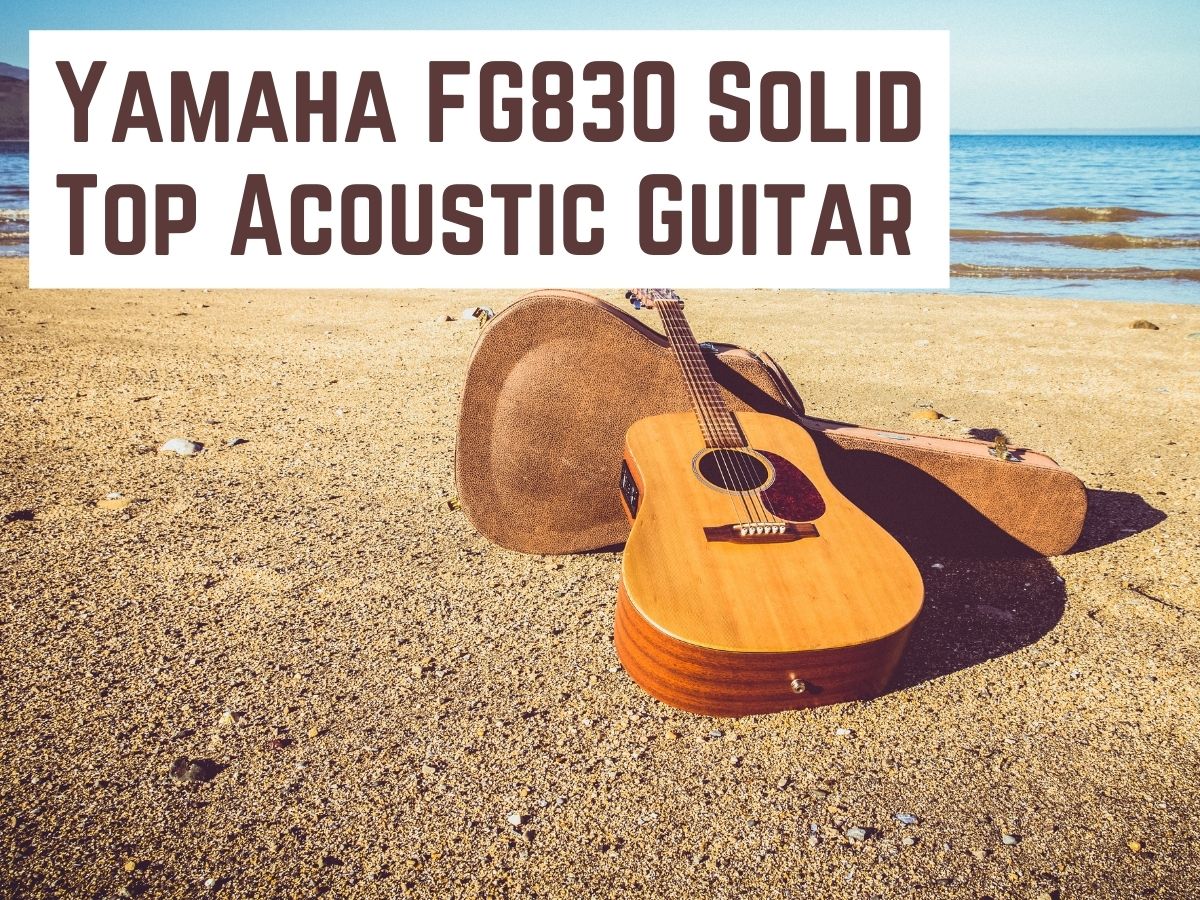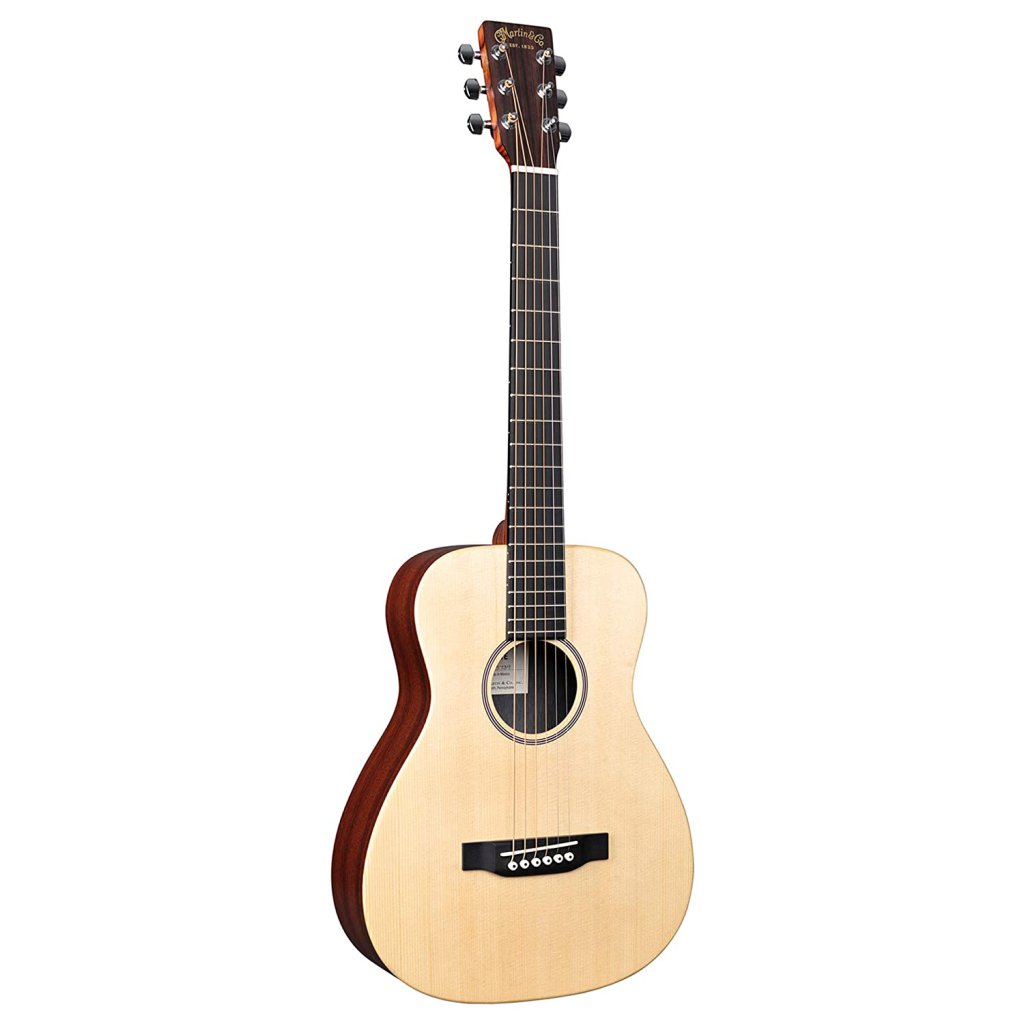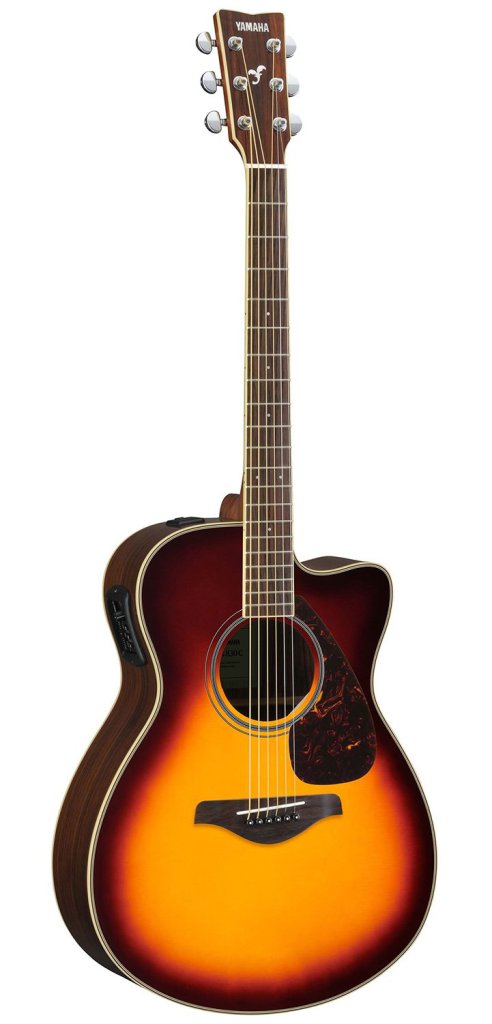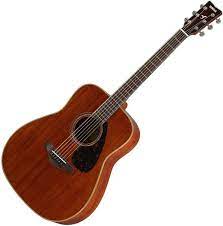
Considering the Yamaha FG830 Solid Top Acoustic Guitar?
Buying from a reputable guitar manufacturer is always a good idea. That’s how I feel about Yamaha guitars: they’re excellent quality instruments, and they’ll last you for many years to come.
The Yamaha FG830 Acoustic Guitar might be what you’re looking for if you want a dreadnought guitar with incredible sound quality at an affordable price. Let’s take a closer look at this guitar.
What to Know Before Buying a Yamaha FG830 Acoustic Guitar?
The Yamaha FG830 Acoustic Guitar solves the age-old problem of finding an affordable instrument that still produces high-quality sound. This model is a popular choice considering its price; it’s not an expensive guitar, but you get a lot of bang for your buck.
I’d recommend this guitar to beginner musicians or experienced musicians that don’t perform professionally. If you’re a performer, this guitar might not cut it. If you want to check out upper range performance guitars, I’d suggest Martin’s Performing Artist Series.
Before purchasing a guitar, ask yourself how much you’re willing to invest and your goals as a musician.
The Yamaha FG830 Solid Top Acoustic Guitar Review
The Yamaha FG series is top-rated. In terms of the FG830, Yamaha promises rich tones and improved sustain. You’ll have the choice of purchasing a Natural, Autumn Burst, or a Tobacco Brown finish.
As I mentioned earlier, this is a dreadnought guitar; meaning you can expect it to be a little larger than a standard guitar. When purchasing, keep in mind a case is not included, but this is very common with many major guitar brands.
Pros
- Great sustainability
- Custom designed bridge bracing
- Bright and robust bass tones
Cons
- Dreadnought models may be too large for those with small hands
- No cutaway may limit some players
- No pick-up
Build Quality and Wood
In terms of the materials Yamaha has used to build this model, you can be confident you’re getting bang for your buck if you choose to go with this model. The FG830 has a spruce wood top, rosewood sides, and a rosewood fingerboard.
Rosewood is known for its ability to create resonant bass tones, so I’d recommend it if you’re searching for more texture in the sound your guitar produces. In addition to the rosewood, the spruce wood top is truly the definition of a smart investment; it gets better with age. While many guitarists worry about keeping their instruments “as good as new,” a spruce top guitar will, as many say, “open up” as it ages.
I have a spruce top guitar, and I’ve been so impressed with how it ages that I always recommend spruce to everyone. Here’s a link to a blog that will outline some positives of spruce wood so you can do some reading yourself
You may not want a guitar that sounds as bright as a spruce top guitar will sound. Another commonly used type of wood for guitar tops is cedar, which is known to be slightly more subdued sounding.
Is one better than the other? Not in my opinion. It’s all just personal preference, so head to your nearest music store and give a few spruce tops and cedar tops a strum to compare them.
One thing, though: if you decide to go with a cedar top guitar, don’t expect the same blossoming effect that occurs with spruce tops as it ages.
No Cutaway
The fact that this guitar doesn’t have a cutaway may be either a pro or a con for you, depending on what you’re looking for.
Some say that cutaways take away from the resonance of a guitar because the body is smaller. Therefore a less powerful sound is produced. Maybe this a good point, but I have heard some beautiful, rich tones come from guitars with cutaways. All I’m saying is: don’t knock a cutaway until you try it. They can be quite helpful when playing in the upper register, which brings us to why you may want to consider a guitar with a cutaway instead.
Some guitarists prefer cutaways to non-cutaways because it opens up the neck past the twelfth fret. Who doesn’t want to create all those beautiful high melodies with relative ease?
Like the spruce or cedar top issue, this is something that all comes down to personal preference. Ask yourself if you think you’ll often use those upper frets, or if you can see yourself sticking to chords in and around the first position.
Sound quality
The sound created by this guitar is pretty excellent, considering the price range. I’d say this is more of a mid-range guitar (not too cheap but not too pricey), but the sound rings more like an upper range guitar.
One of the things guitarists often rave about when it comes to this guitar is its ability to sustain sound. With low to mid-range guitars, sustained notes can be a big issue. Notes that decay quickly can often result from the cheaper woods used on lower-end guitars. You won’t have that problem with the FG830, though. Long, sustained notes are something you’ll be guaranteed to hear if you choose to go with this model for your next purchase.
Additionally, Yamaha also custom-designed the bridge bracing for this guitar. You don’t typically see unique bridge bracings on guitars in this price range, so I would include this on your list of positives when considering this model.
The custom bridge bracing will allow for louder and stronger sounds in the mid- to low- ranges of your guitar, which will contribute to that richness in the bass tones resulting from the rosewood sides.
Remember, the strings you use will also affect your sound. For more information, check out our article on good quality strings.
Alternatives To the Yamaha FG830
The L1XE Little Martin

The L1XE Little Martin may be a good fit if you find dreadnought models too cumbersome because you have a small frame.
If you think the FG830’s frets may be too large for you, you can also check this article on the best guitars for small hands. The L1XE is more affordable and does not have a custom bridge brace.
The Yamaha FSX830C Acoustic Guitar

If you’re a performer, you may want a guitar that comes with a pick-up.
The Yamaha FSX830C is excellent for performance settings but is more expensive than the Yamaha FG830 Acoustic Guitar. This guitar also includes a cutaway, which is useful for high register playing.
The Yamaha FG850 Acoustic Guitar

You may like the FG line-up but are looking for something of better quality. The Yamaha FG850 comes from the same family of guitars but steps things up a notch in building excellence.
This guitar is built using mahogany, which will create a warm sound and rich middle frequencies.
The Bottom Line
The FG830 is a guitar that will ring true to Yamaha’s claims. You’re guaranteed resonance, strong bass tones, and a bright sound from the spruce wood top. You’ll also be able to hear your guitar improve with age as the spruce begins to open up.

